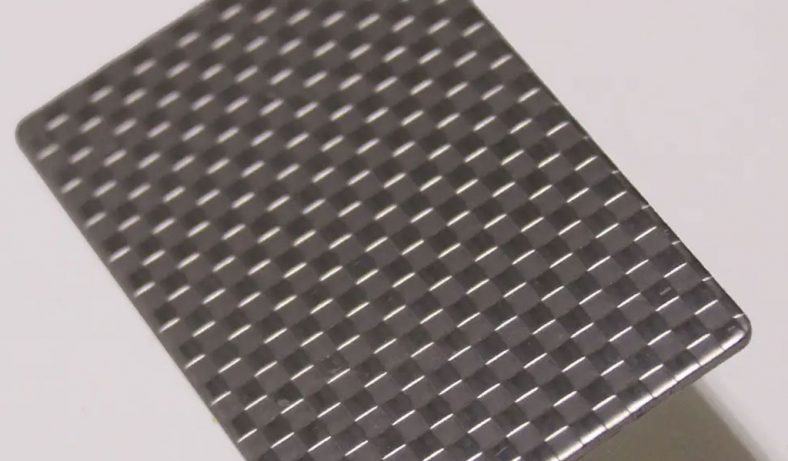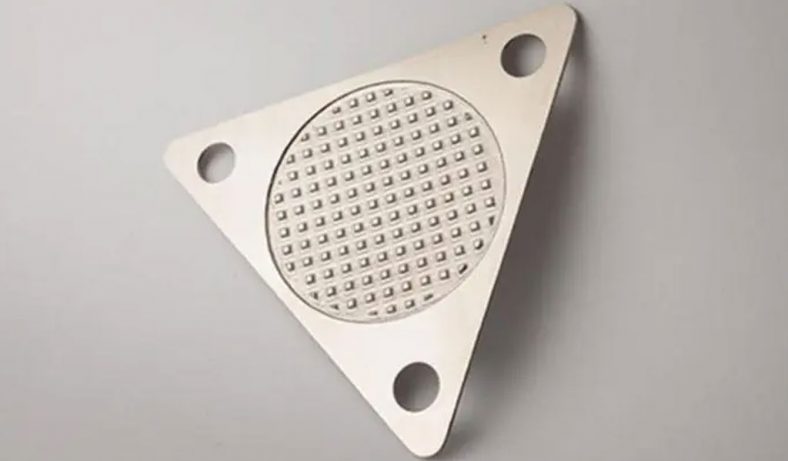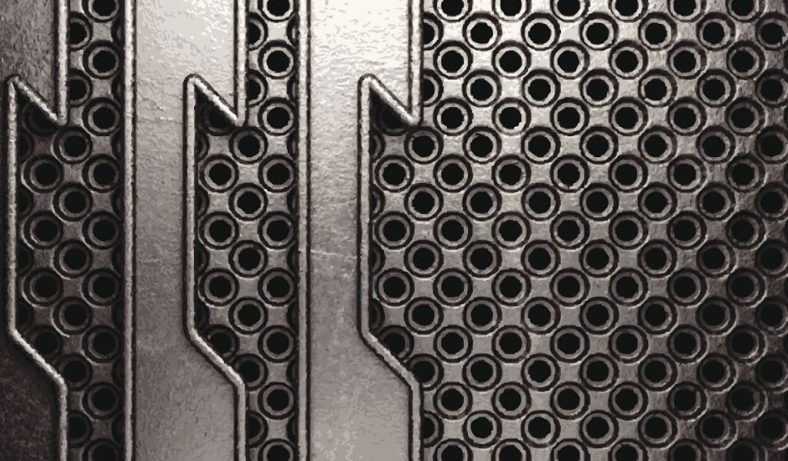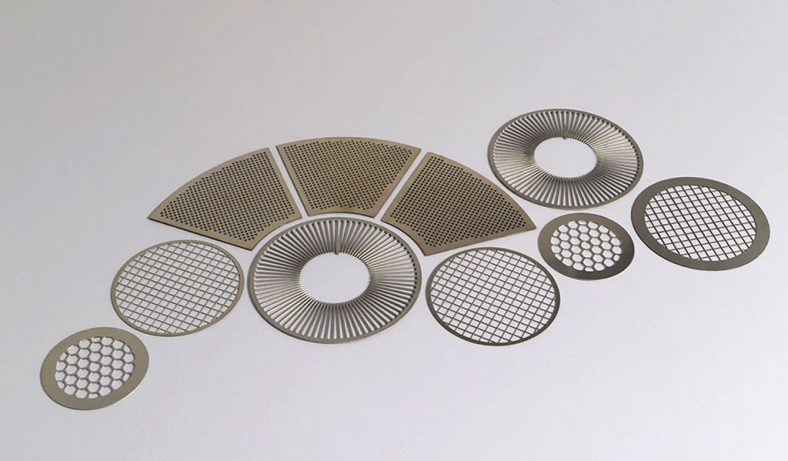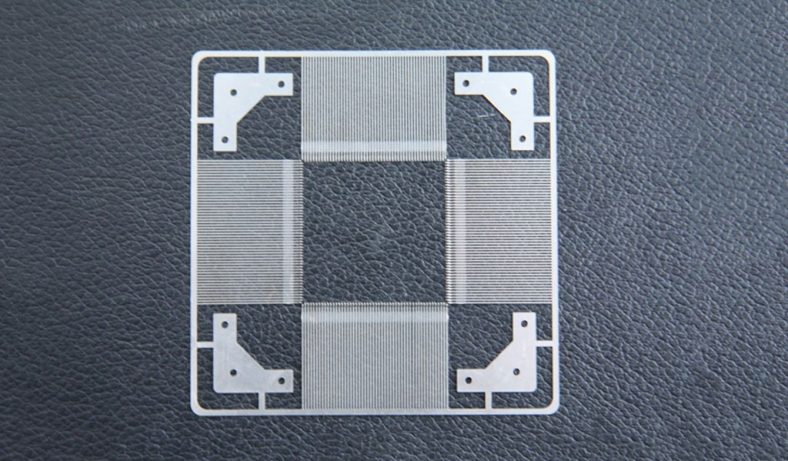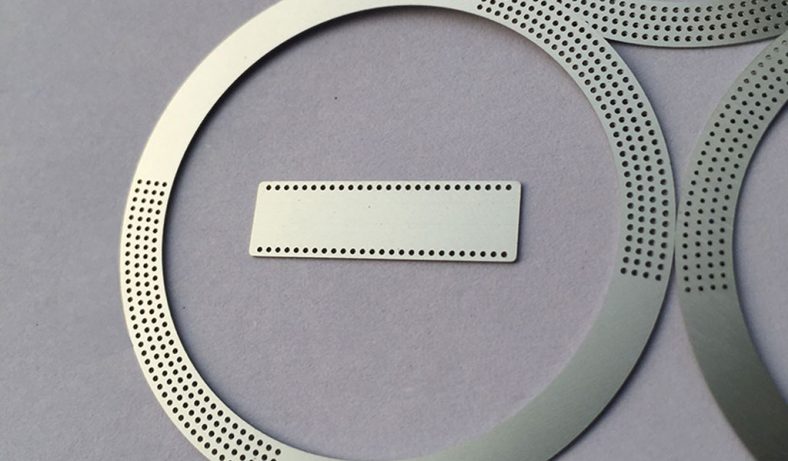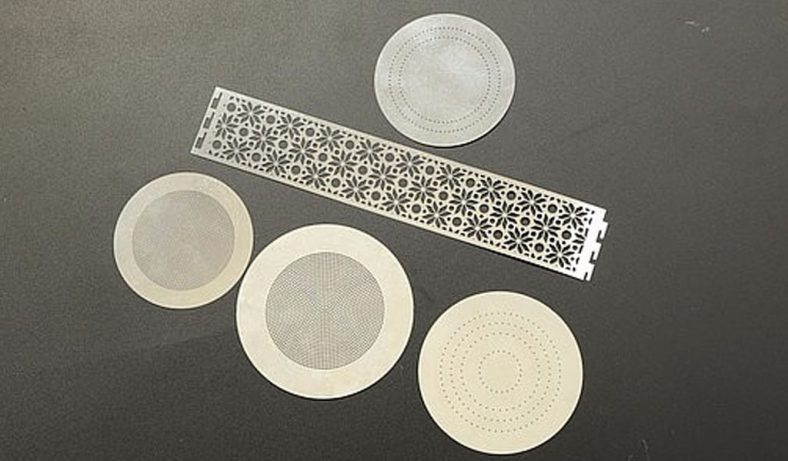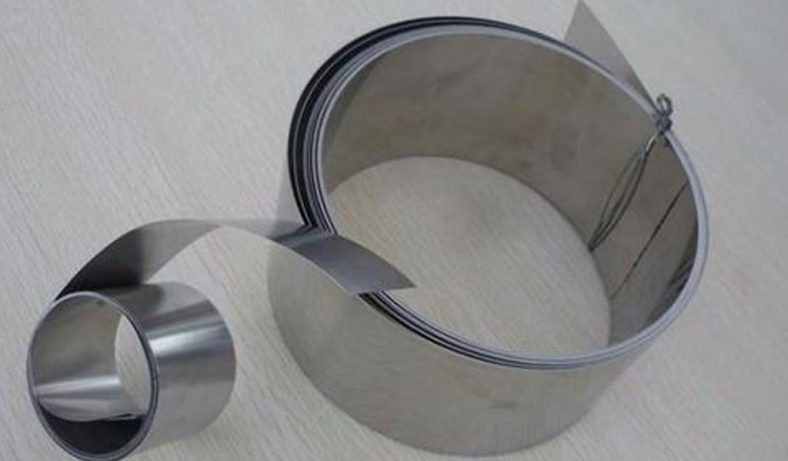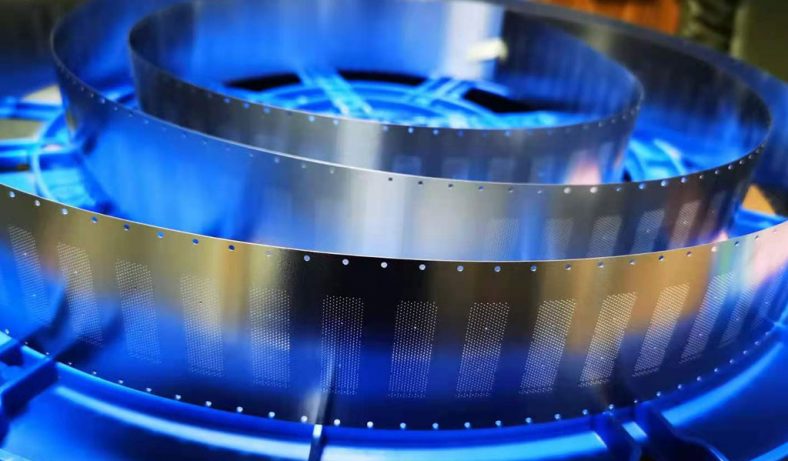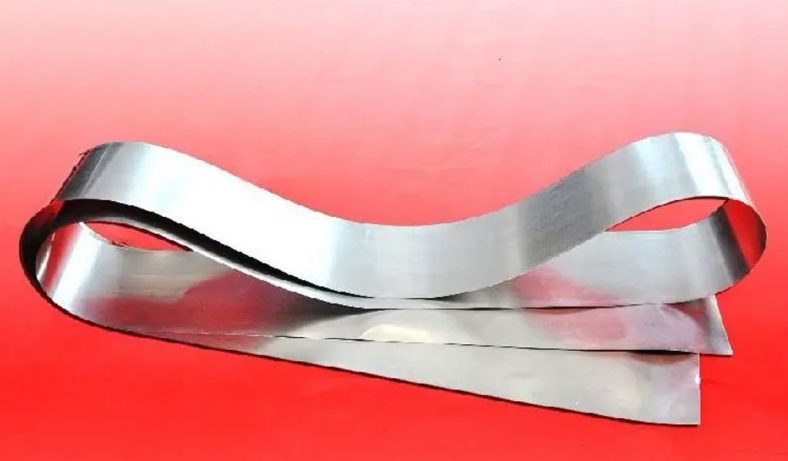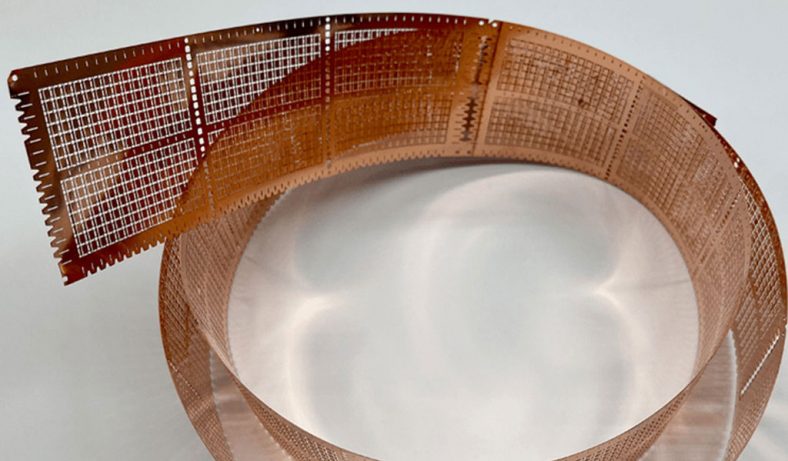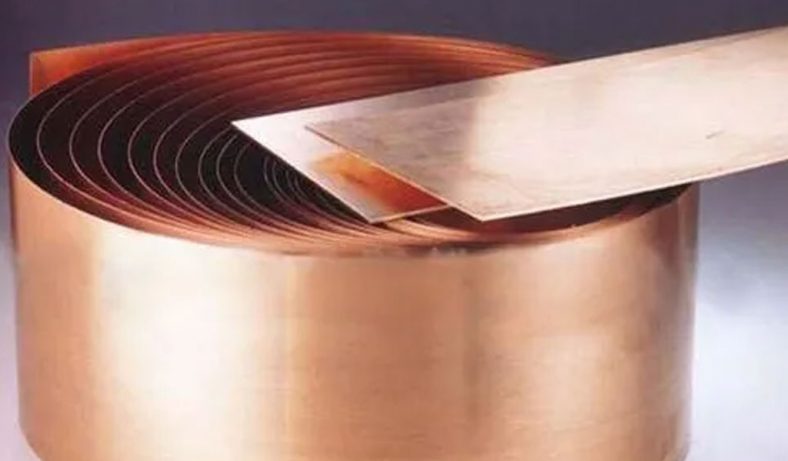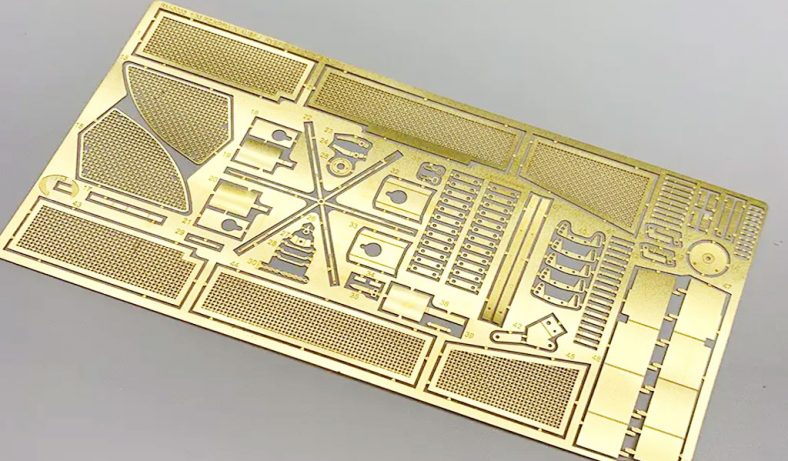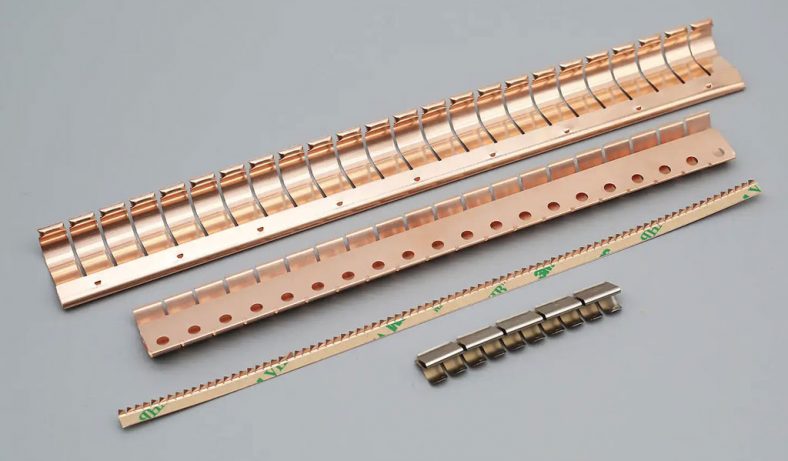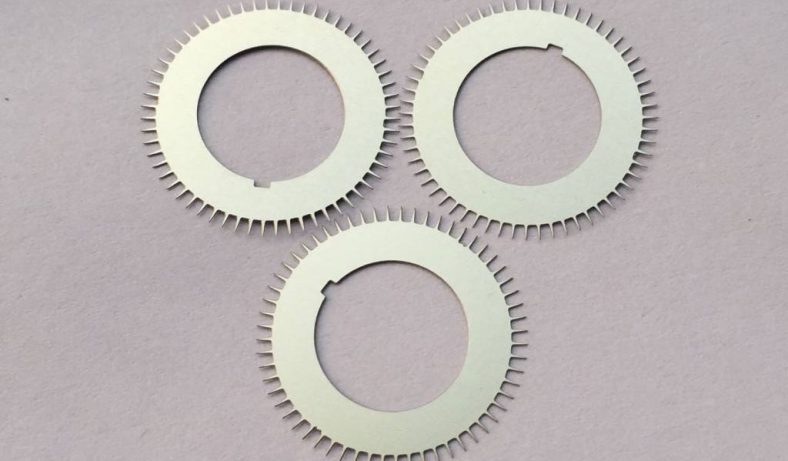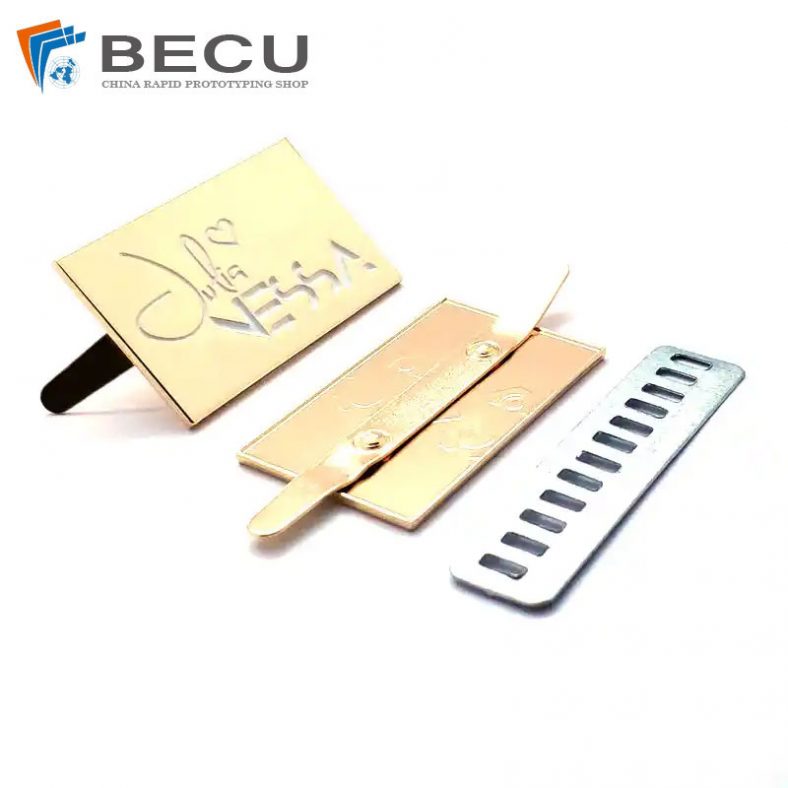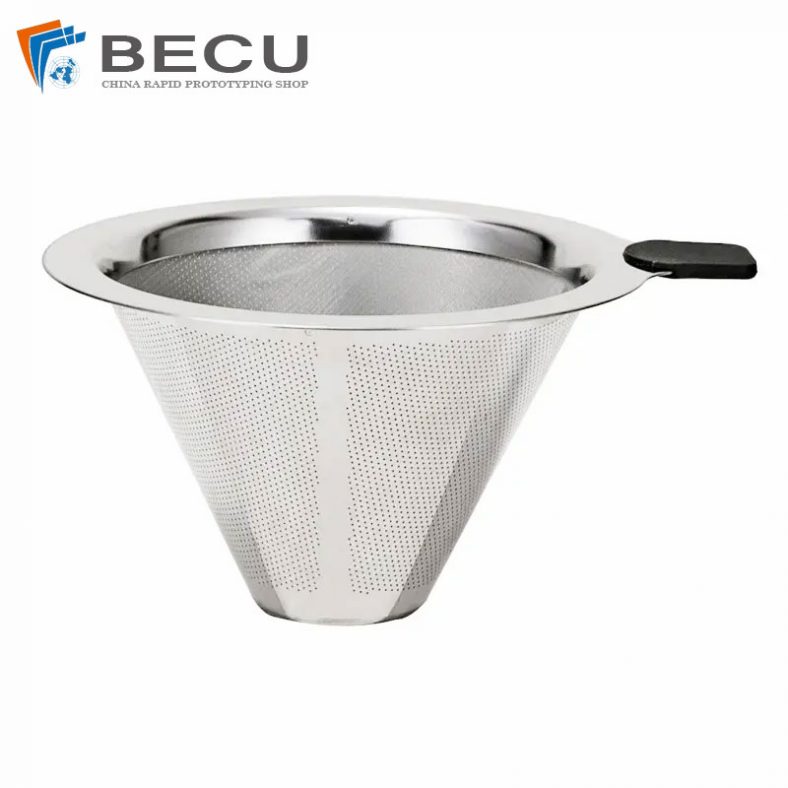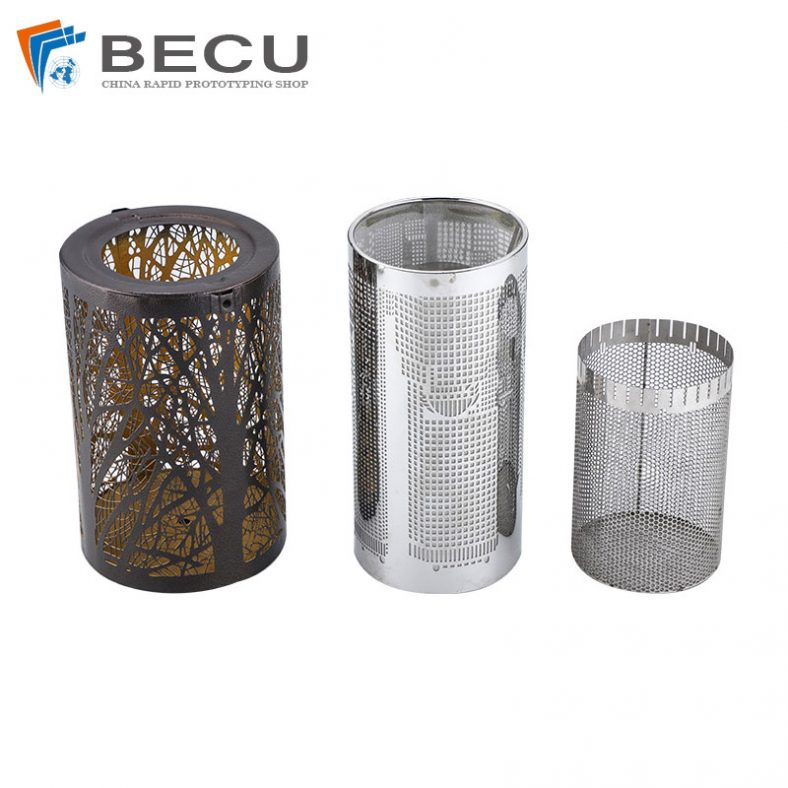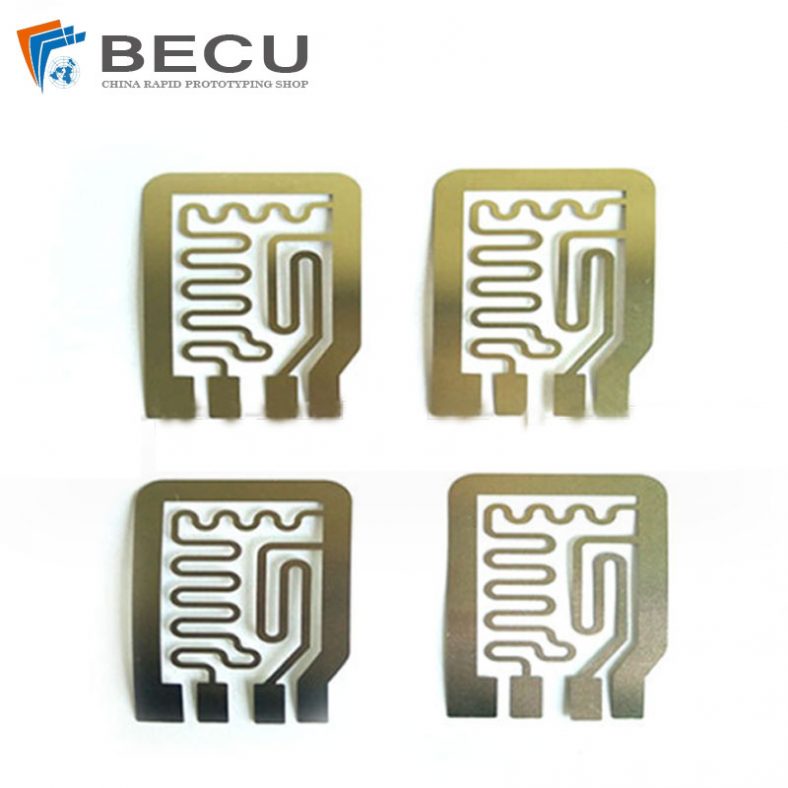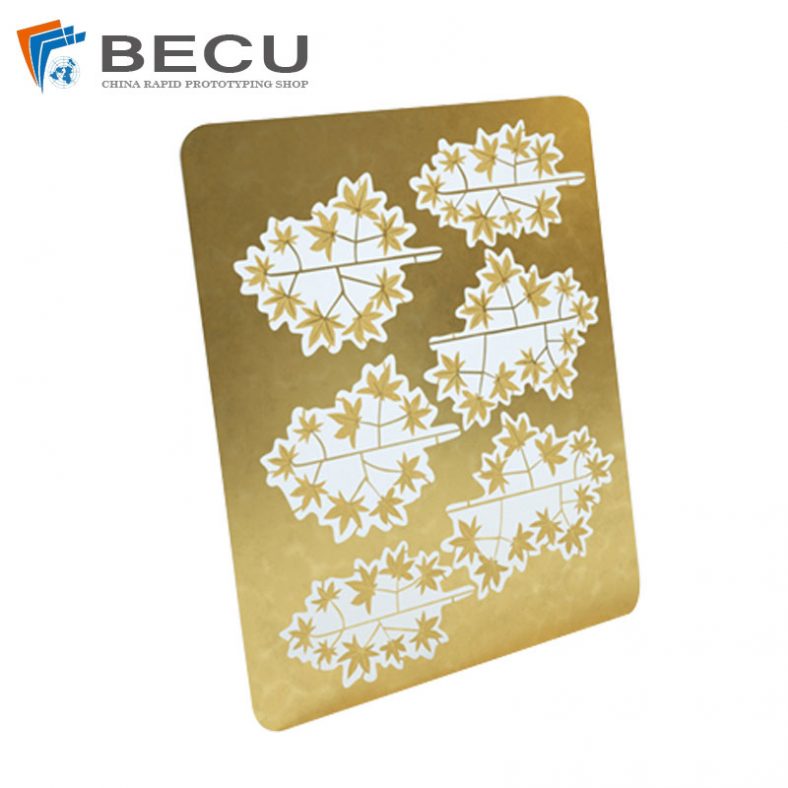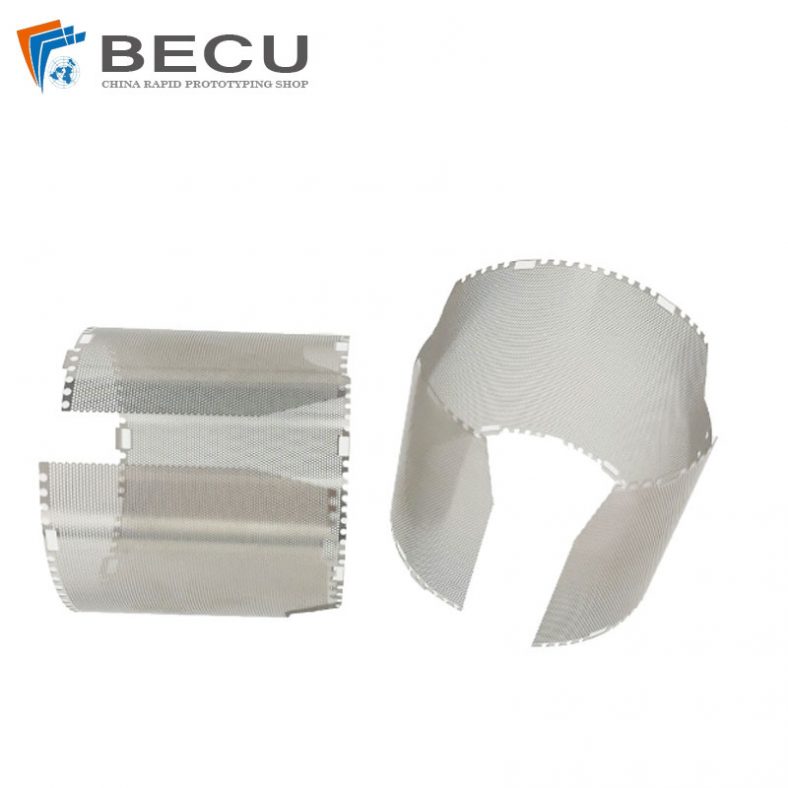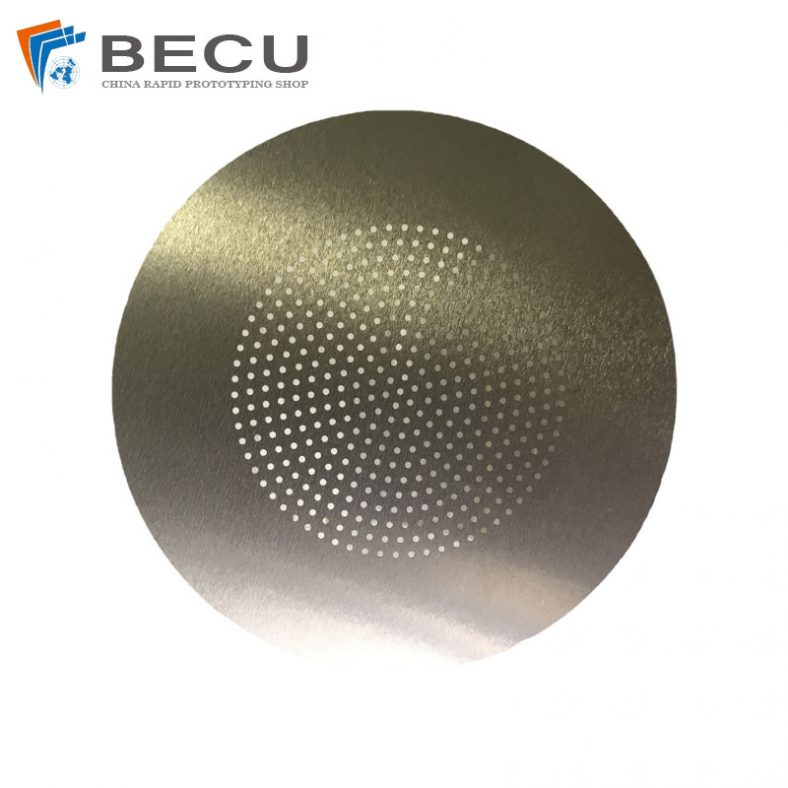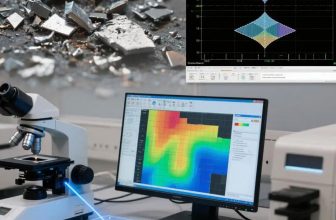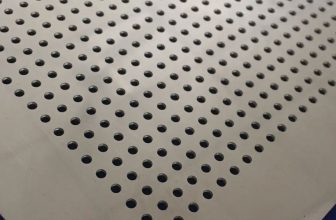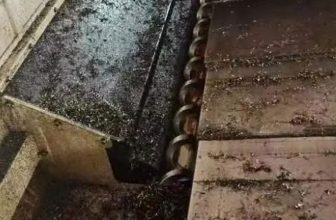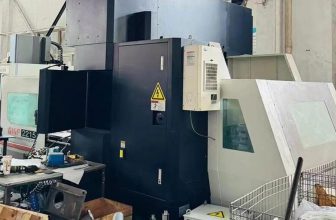Atomic Layer Etching (ALE) is a cutting-edge nanofabrication technique that enables the precise removal of material at the atomic scale, offering unparalleled control over etching processes in semiconductor manufacturing. As the semiconductor industry pushes toward smaller, more complex device architectures, such as three-dimensional (3D) NAND flash memory, the demand for precise, selective, and uniform etching methods has grown exponentially. 3D NAND, a revolutionary memory technology, stacks memory cells vertically to achieve higher storage densities, but its fabrication involves intricate high-aspect-ratio (HAR) structures that challenge conventional etching techniques. ALE addresses these challenges by leveraging self-limiting chemical reactions to achieve atomic-scale precision, making it an essential tool for the fabrication of advanced 3D NAND devices.
This article provides a comprehensive exploration of ALE, focusing on its principles, mechanisms, applications, and critical role in 3D NAND fabrication. It delves into the technical intricacies of ALE processes, compares thermal and plasma-enhanced ALE, and examines their integration into the manufacturing of 3D NAND memory. The discussion includes detailed analyses of process parameters, material interactions, and challenges, supported by comparative tables and references to recent advancements in the field. By elucidating the scientific and engineering underpinnings of ALE, this article aims to serve as a definitive resource for researchers, engineers, and industry professionals involved in semiconductor technology.
Historical Context and Evolution of Etching Technologies
The evolution of etching technologies in semiconductor manufacturing reflects the industry’s relentless pursuit of miniaturization and precision. Early semiconductor devices relied on wet chemical etching, which used liquid etchants to remove material isotropically. While effective for larger feature sizes, wet etching lacked the precision required for submicron geometries due to its isotropic nature and limited control over etch depth. The introduction of dry etching, particularly plasma-based reactive ion etching (RIE), in the 1970s marked a significant advancement. RIE combined chemical reactions with physical ion bombardment to achieve anisotropic etching, enabling the fabrication of finer features.
However, as device dimensions shrank below 10 nm, conventional RIE faced limitations, including surface damage, profile distortion, and insufficient selectivity. These challenges were particularly pronounced in the fabrication of 3D NAND, which requires etching through stacks of alternating materials (e.g., silicon dioxide and silicon nitride) with aspect ratios exceeding 50:1. The need for atomic-scale control led to the development of ALE, first proposed in the 1980s as a counterpart to atomic layer deposition (ALD). Initially considered too slow for high-volume manufacturing, ALE gained traction in the 2010s with advancements in plasma technology and process optimization, making it viable for industrial applications.
ALE’s emergence aligns with the transition from planar NAND to 3D NAND, a paradigm shift driven by the physical limits of scaling two-dimensional memory architectures. 3D NAND stacks memory cells vertically, increasing storage density without relying solely on lithographic scaling. However, this architecture introduces complex fabrication challenges, such as etching deep, narrow channels and maintaining uniformity across multiple layers. ALE’s ability to remove material layer by layer with atomic precision has positioned it as a cornerstone technology for 3D NAND, enabling the fabrication of high-performance, high-density memory devices.
Principles of Atomic Layer Etching
Fundamental Mechanisms
ALE is a cyclic process that removes material one atomic layer at a time through sequential, self-limiting reactions. Unlike continuous etching methods, which rely on simultaneous chemical and physical processes, ALE separates the etching process into distinct steps, typically adsorption and desorption. Each cycle consists of two primary half-cycles:
- Adsorption (Modification) Step: A reactive species, often a gas-phase precursor, is introduced to the substrate surface, where it chemisorbs or reacts to form a modified surface layer. This reaction is self-limiting, meaning it stops once the surface is fully saturated, ensuring that only a single atomic layer is modified.
- Desorption (Removal) Step: The modified surface layer is removed, typically through a low-energy process such as ion bombardment, thermal activation, or ligand exchange. This step is also self-limiting, as only the modified layer is removed, leaving the underlying material intact.
A purge step follows each half-cycle to remove excess reactants and byproducts, preventing unwanted reactions and ensuring process cleanliness. This cyclic nature distinguishes ALE from conventional etching, providing precise control over etch depth and minimizing damage to the substrate.
Thermal vs. Plasma-Enhanced ALE
ALE can be categorized into two main approaches: thermal ALE and plasma-enhanced ALE, each with distinct mechanisms and applications.
- Thermal ALE: This method relies on thermally driven, isotropic reactions, typically involving sequential chemical processes such as fluorination and ligand exchange. For example, in the thermal ALE of hafnium oxide (HfO₂), hydrogen fluoride (HF) fluorinates the surface, followed by a ligand-exchange reaction with a metal-organic precursor like dimethyl-aluminum chloride (DMAC). Thermal ALE is advantageous for isotropic etching and is less likely to cause surface damage due to the absence of high-energy ions. However, it is generally slower and less suitable for anisotropic etching.
- Plasma-Enhanced ALE: This approach uses plasma to generate reactive species, such as radicals or ions, which enhance the adsorption or desorption steps. For instance, in silicon ALE, plasma chlorination forms a reactive SiClₓ layer, which is then removed by argon ion bombardment. Plasma-enhanced ALE offers higher throughput and anisotropic etching capabilities, making it ideal for HAR structures in 3D NAND. However, it requires careful control to minimize ion-induced damage.
Self-Limiting Nature and Selectivity
The self-limiting nature of ALE ensures that each cycle removes a precise amount of material, typically on the order of 0.1–1 nm per cycle, depending on the material and process conditions. This precision is critical for 3D NAND, where variations of even a few atoms can impact device performance. Additionally, ALE offers high selectivity, allowing the etching of one material (e.g., Si₃N₄) while preserving another (e.g., SiO₂). Selectivity is achieved by tailoring the chemistry of the adsorption and desorption steps to target specific materials, reducing collateral damage to adjacent layers.
Atomic Layer Etching in 3D NAND Fabrication
Overview of 3D NAND Architecture
3D NAND flash memory is a non-volatile storage technology that stacks memory cells vertically to achieve higher storage density and improved performance compared to planar NAND. The architecture consists of alternating layers of insulating (e.g., SiO₂) and sacrificial (e.g., Si₃N₄) materials, which are later replaced with conductive wordlines (e.g., tungsten). Key structural features include:
- Channel Holes: Vertical cylindrical holes etched through the stack to form the memory cell channels, typically filled with polycrystalline silicon (poly-Si).
- Wordlines: Horizontal conductive layers that connect memory cells, formed by replacing sacrificial Si₃N₄ layers.
- Gate Line Slits (GLS): Deep trenches that separate memory blocks and facilitate wordline formation.
- Staircase Structures: Stepped regions that provide electrical contacts to individual wordlines.
Fabricating these features requires etching processes capable of handling HAR structures (aspect ratios >50:1), maintaining uniformity across multiple layers, and achieving precise control over critical dimensions (CDs). ALE addresses these requirements by enabling conformal etching, minimizing surface damage, and ensuring uniformity in complex geometries.
Role of ALE in 3D NAND Processes
ALE is employed in several critical steps of 3D NAND fabrication, including channel hole etching, wordline formation, and gate line slit etching. Its role is particularly pronounced in the following processes:
Channel Hole Etching
Channel hole etching is one of the most challenging steps in 3D NAND fabrication, requiring the creation of deep, narrow holes through alternating SiO₂/Si₃N₄ stacks. These holes, with aspect ratios exceeding 50:1, must maintain uniform diameter and straight profiles to ensure consistent electrical performance. Conventional RIE struggles with issues such as bowing, twisting, and incomplete etching due to transport limitations and ion scattering.
ALE overcomes these challenges by using sequential, self-limiting reactions to etch the stack layer by layer. For example, plasma-enhanced ALE can alternate between fluorination (using fluorine-based plasmas) and ion-assisted removal to achieve anisotropic etching. The self-limiting nature of ALE ensures uniform etch rates across the depth of the hole, reducing defects like CD variation and incomplete etching. Studies have shown that ALE can achieve etch rates of 0.5–1 nm per cycle for SiO₂ and Si₃N₄, with minimal profile distortion.
Wordline Formation
Wordline formation involves selectively removing sacrificial Si₃N₄ layers and replacing them with conductive materials like tungsten. This process, known as the replacement-gate scheme, requires isotropic etching to access lateral recesses within the stack. Thermal ALE is particularly suited for this step, as it enables conformal etching of Si₃N₄ without damaging the surrounding SiO₂ layers. For instance, thermal ALE using HF and a metal-organic precursor can selectively etch Si₃N₄ at a rate of 0.6 nm per cycle, ensuring precise control over recess depth.
The integration of ALE with ALD is critical for wordline formation. After etching the Si₃N₄, ALD is used to deposit a high-k dielectric (e.g., Al₂O₃) and tungsten, filling the recesses conformally. The combination of ALE and ALD ensures void-free filling and precise control over wordline thickness, enhancing device reliability.
Gate Line Slit Etching
Gate line slits are deep trenches that separate memory blocks and provide access for wordline replacement. These slits require anisotropic etching to maintain straight profiles and uniform CDs. Plasma-enhanced ALE is commonly used, leveraging directional ion bombardment to achieve high anisotropy. For example, a chlorine-based plasma can modify the surface, followed by argon ion removal, achieving etch rates of 0.8 nm per cycle for SiO₂/Si₃N₄ stacks. ALE’s ability to control etch depth and minimize sidewall damage is critical for ensuring structural integrity in GLS etching.
Materials and Chemistries in ALE for 3D NAND
ALE processes in 3D NAND involve a variety of materials and chemical precursors, tailored to the specific requirements of each etching step. The following table summarizes key materials, chemistries, and their applications in 3D NAND fabrication:
| Material | Etch Chemistry | ALE Method | Application | Etch Rate (nm/cycle) | Selectivity |
|---|---|---|---|---|---|
| SiO₂ | HF + TMA | Thermal ALE | Channel hole, GLS | 0.5–0.7 | High (vs. Si₃N₄) |
| Si₃N₄ | HF + DMAC | Thermal ALE | Wordline formation | 0.6–0.8 | High (vs. SiO₂) |
| Poly-Si | Cl₂ + Ar | Plasma ALE | Channel formation | 0.8–1.0 | Moderate (vs. SiO₂) |
| HfO₂ | HF + DMAC | Thermal ALE | Dielectric etching | 0.6 | High (vs. SiO₂) |
| Al₂O₃ | HF + TMA | Thermal ALE | Gate dielectric | 0.5 | High (vs. Si₃N₄) |
Table 1: Common Materials and Chemistries in ALE for 3D NAND Fabrication
- Silicon Dioxide (SiO₂): Etched using HF and trimethylaluminum (TMA) in thermal ALE, SiO₂ is a key insulating layer in 3D NAND stacks. The process involves fluorination followed by ligand exchange, achieving high selectivity over Si₃N₄.
- Silicon Nitride (Si₃N₄): Selectively etched using HF and DMAC, Si₃N₄ is removed during wordline formation. The high selectivity of thermal ALE ensures minimal damage to adjacent SiO₂ layers.
- Polycrystalline Silicon (Poly-Si): Plasma-enhanced ALE with chlorine (Cl₂) and argon (Ar) is used to etch poly-Si channels. The process balances anisotropy and selectivity to preserve surrounding dielectrics.
- Hafnium Oxide (HfO₂): As a high-k dielectric, HfO₂ is etched using thermal ALE with HF and DMAC, offering precise control for gate dielectric applications.
- Aluminum Oxide (Al₂O₃): Etched with HF and TMA, Al₂O₃ is used in gate dielectrics and requires high selectivity to avoid damaging adjacent materials.
Technical Challenges and Solutions
High-Aspect-Ratio Etching
HAR etching in 3D NAND poses significant challenges, including transport limitations, ion scattering, and profile distortion. As aspect ratios increase, reactive species struggle to reach the bottom of deep features, leading to incomplete etching or non-uniform profiles. ALE addresses these issues through its cyclic nature, which allows for controlled delivery of reactants and removal of byproducts. For example, plasma-enhanced ALE can use low-energy ions to minimize scattering, while thermal ALE ensures conformal etching in lateral recesses.
Recent advancements include the use of pulsed plasma sources to enhance reactant transport and reduce ion-induced damage. Additionally, optimizing precursor dosing and purge times can improve uniformity in HAR structures. Studies have demonstrated that ALE can achieve uniform etch profiles in holes with aspect ratios up to 100:1, a critical requirement for next-generation 3D NAND.
Surface Damage and Variability
Conventional etching methods, such as RIE, often cause surface damage due to high-energy ion bombardment, leading to defects like dangling bonds and lattice disruptions. In 3D NAND, such damage can degrade the electrical properties of memory cells, increasing leakage current and reducing reliability. ALE minimizes surface damage by using low-energy processes and self-limiting reactions. For instance, thermal ALE avoids ion bombardment entirely, while plasma-enhanced ALE employs low-bias voltages (e.g., <10 V) to reduce sputtering.
Variability, both across the wafer and within a die, is another challenge in 3D NAND fabrication. ALE’s precise control over etch depth and uniformity helps mitigate variability, ensuring consistent CDs and layer thicknesses. Advanced process control techniques, such as real-time monitoring and feedback loops, further enhance ALE’s ability to maintain uniformity in high-volume manufacturing.
Throughput and Cost Considerations
Historically, ALE’s low etch rates (e.g., 0.5–1 nm/cycle) limited its adoption in high-volume manufacturing due to concerns about throughput. However, recent innovations have improved ALE’s efficiency, making it viable for 3D NAND production. Plasma-enhanced ALE, with its faster cycle times, has achieved etch rates comparable to RIE in certain applications. Additionally, the development of high-throughput ALE tools, such as those from Applied Materials and Lam Research, has reduced processing times.
Cost remains a concern, as ALE requires specialized equipment and precise control of process parameters. However, the benefits of ALE—such as reduced defect rates, improved yield, and compatibility with advanced nodes—justify its adoption in 3D NAND. Ongoing research aims to further optimize ALE processes, balancing throughput, cost, and performance.
Comparative Analysis of Etching Technologies
To highlight ALE’s advantages in 3D NAND fabrication, the following table compares ALE with conventional etching methods:
| Parameter | Reactive Ion Etching (RIE) | Wet Etching | Thermal ALE | Plasma-Enhanced ALE |
|---|---|---|---|---|
| Etch Precision | Moderate (nm-scale) | Low (µm-scale) | High (Å-scale) | High (Å-scale) |
| Anisotropy | High | Low (isotropic) | Low (isotropic) | High |
| Selectivity | Moderate | Low | High | High |
| Surface Damage | High (ion-induced) | Low | Low | Moderate (low-energy) |
| HAR Capability | Limited (bowing, twisting) | Poor | Excellent | Excellent |
| Throughput | High | High | Low–Moderate | Moderate–High |
| Applications in 3D NAND | Channel hole, GLS | Si₃N₄ removal | Wordline, dielectric | Channel hole, GLS |
Table 2: Comparison of Etching Technologies for 3D NAND Fabrication
- RIE: Offers high anisotropy but struggles with HAR structures and causes significant surface damage, limiting its suitability for advanced 3D NAND nodes.
- Wet Etching: Simple and cost-effective but lacks precision and anisotropy, making it unsuitable for most 3D NAND processes except Si₃N₄ removal.
- Thermal ALE: Excels in isotropic etching and high selectivity, ideal for wordline formation and dielectric etching, but limited by lower throughput.
- Plasma-Enhanced ALE: Combines high precision, anisotropy, and moderate throughput, making it versatile for channel hole and GLS etching.
Integration with Atomic Layer Deposition
ALE and ALD are complementary techniques that together enable the fabrication of complex 3D NAND structures. While ALE removes material with atomic precision, ALD deposits thin films with similar control, ensuring conformal coverage in HAR features. The integration of ALE and ALD is particularly critical in the replacement-gate scheme, where Si₃N₄ is etched and replaced with a high-k dielectric and tungsten.
For example, after thermal ALE removes Si₃N₄ to form wordline recesses, ALD deposits Al₂O₃ as a gate dielectric, followed by tungsten as the wordline material. The self-limiting nature of both processes ensures precise control over layer thickness and uniformity, minimizing voids and defects. This synergy has been demonstrated in studies achieving void-free wordline fill in stacks with over 100 layers.
The combination of ALE and ALD also enables surface smoothing, a unique benefit in 3D NAND fabrication. Rough surfaces, often introduced by deposition or etching, can degrade device performance by increasing scattering losses or defect density. ALE’s ability to remove material uniformly can reduce surface roughness, while ALD can deposit conformal films to further smooth the surface. Experimental data have shown that ALE/ALD cycles can reduce root-mean-square (RMS) roughness from 1.5 nm to 0.5 nm in ZnO films, enhancing device reliability.
Advanced Modeling and Simulation
The complexity of ALE processes in 3D NAND necessitates advanced modeling and simulation to optimize process parameters and predict outcomes. Several modeling approaches are used:
- Kinetic Monte Carlo (kMC): Simulates surface reactions at the atomic scale, capturing the stochastic nature of adsorption and desorption. kMC models have been used to predict etch rates and uniformity in Al₂O₃ ALE, achieving agreement with experimental data within 5%.
- Density Functional Theory (DFT): Provides insights into reaction pathways and energetics, guiding the selection of precursors. DFT studies have identified activation energies for HfO₂ ALE (e.g., 0.178 eV for the H₂O step), informing process optimization.
- Finite Difference Simulations: Model surface evolution during ALE, particularly for smoothing applications. These simulations have demonstrated ALE’s ability to reduce roughness in 3D structures.
Machine learning techniques, such as feed-forward neural networks (FNNs), are increasingly used to predict etch times and optimize operating conditions in real time. For example, an FNN trained on kMC data for Al₂O₃ ALE reduced computation time by 90%, enabling real-time process control.
Future Prospects and Challenges
Scaling to Higher Layer Counts
As 3D NAND scales to 512 layers and beyond, ALE will play an increasingly critical role in maintaining precision and uniformity. Higher layer counts exacerbate challenges like wafer warpage, stress, and variability, requiring advanced ALE techniques. Innovations such as selective ALE, which targets specific materials without affecting others, and quasi-ALE, which combines ALE with continuous etching for higher throughput, are under development to address these needs.
Emerging Materials
The introduction of new materials, such as silicon carbide (SiC) and 2D materials (e.g., graphene), in 3D NAND and other semiconductor applications will require tailored ALE processes. For instance, plasma ALE of SiC has achieved etch rates of 1 layer per cycle with minimal roughness, demonstrating its potential for ultra-precision devices. Developing ALE chemistries for these materials will be a key research focus.
Industry Adoption and Standardization
While ALE is gaining traction in 3D NAND manufacturing, its widespread adoption requires standardization of processes and equipment. Collaborative efforts between academia and industry, as advocated in recent reviews, aim to unify ALE terminology, criteria, and characterization methods. This standardization will facilitate the transition from research to high-volume production.
Environmental and Safety Considerations
ALE processes often involve hazardous precursors, such as HF and Cl₂, raising environmental and safety concerns. Developing greener chemistries and improving waste management will be essential for sustainable manufacturing. Research into alternative precursors, such as non-fluorinated ligands, is ongoing to address these issues.
Conclusion
Atomic Layer Etching represents a transformative advancement in semiconductor manufacturing, offering unprecedented control over material removal at the atomic scale. In the context of 3D NAND fabrication, ALE addresses the challenges of high-aspect-ratio etching, surface damage, and variability, enabling the production of high-density, high-performance memory devices. Its integration with ALD, advanced modeling, and ongoing innovations in throughput and selectivity position ALE as a cornerstone technology for the semiconductor industry’s future.
As 3D NAND continues to scale and new materials emerge, ALE’s role will expand, driving advancements in memory technology and beyond. By combining scientific rigor with engineering ingenuity, ALE exemplifies the industry’s commitment to pushing the boundaries of nanotechnology, ensuring that the demands of Moore’s Law and beyond are met with precision and reliability.

